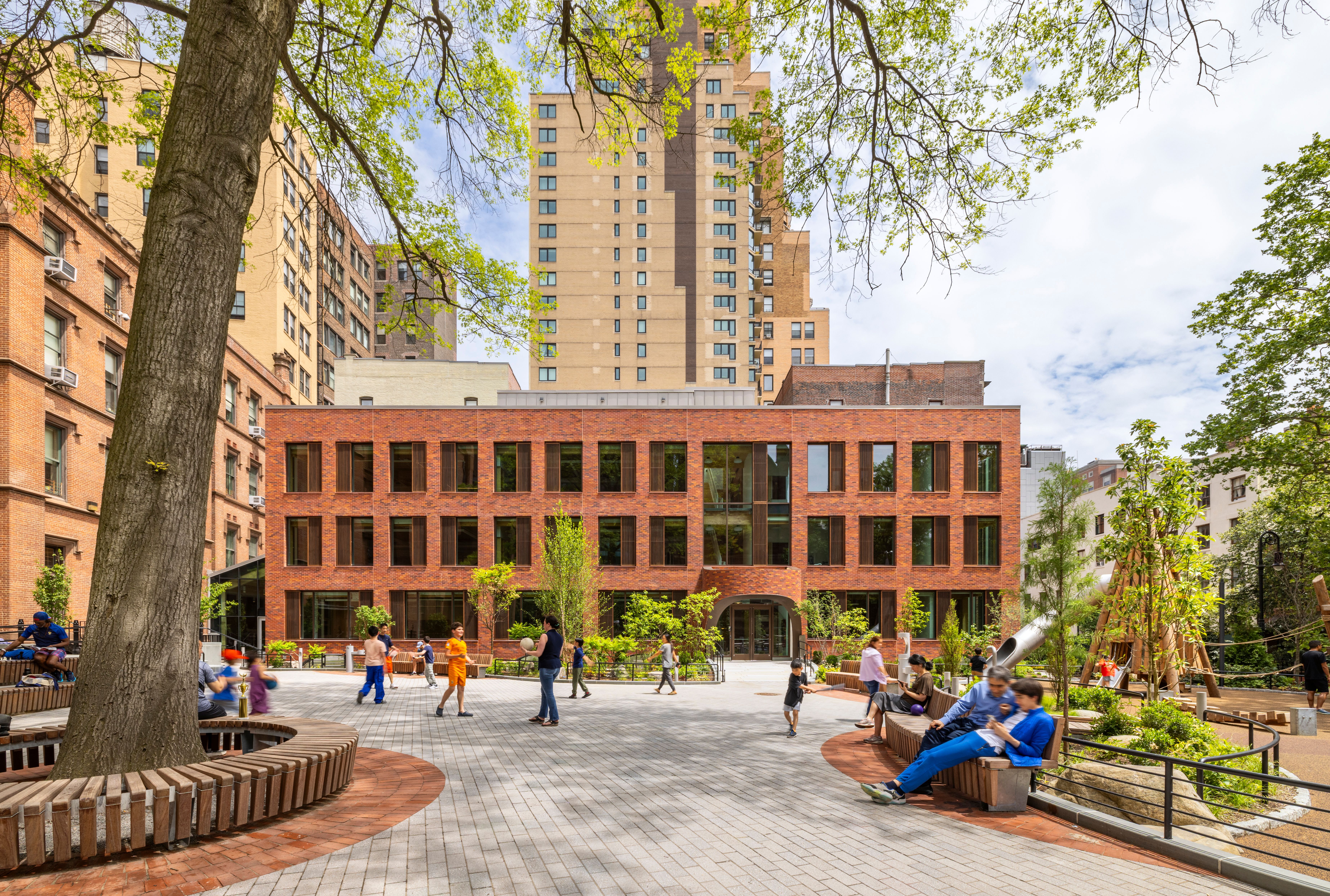
The Garden House’s new brick façade meets a reimagined Garden, unifying architecture and landscape at the heart of the Packer campus.
Photo: Albert Vecerka/Esto
Reimagining a landmarked campus with a light-filled, sustainable space designed for the joy of its students and the ease of those who teach and care for them.
Set within the Brooklyn Heights Historic District, the Garden House at The Packer Collegiate Institute transforms a landmark 1869 brownstone into a four-level hub for the Lower School student population. Designed by WXY, the project introduces a 17,250-square-foot mass timber expansion, that complements the building’s historical details with a vision for the future of education.
The need for this facility arose in response to the campus’s evolution and growth over the past century. Packer possesses a unique architectural history, operating out of a connected patchwork of acquired buildings, including the former St. Ann’s Church. Repurposing these structures, while rich with character, often led to programming complexities such as inefficient layouts, less than ideal adjacent and disruptive circulation paths. More purposeful integration of the Garden House, which stood underutilized on the edge of campus, presented a unique opportunity to alleviate Packer’s operational challenges while also providing educational spaces aligned with students’ needs.
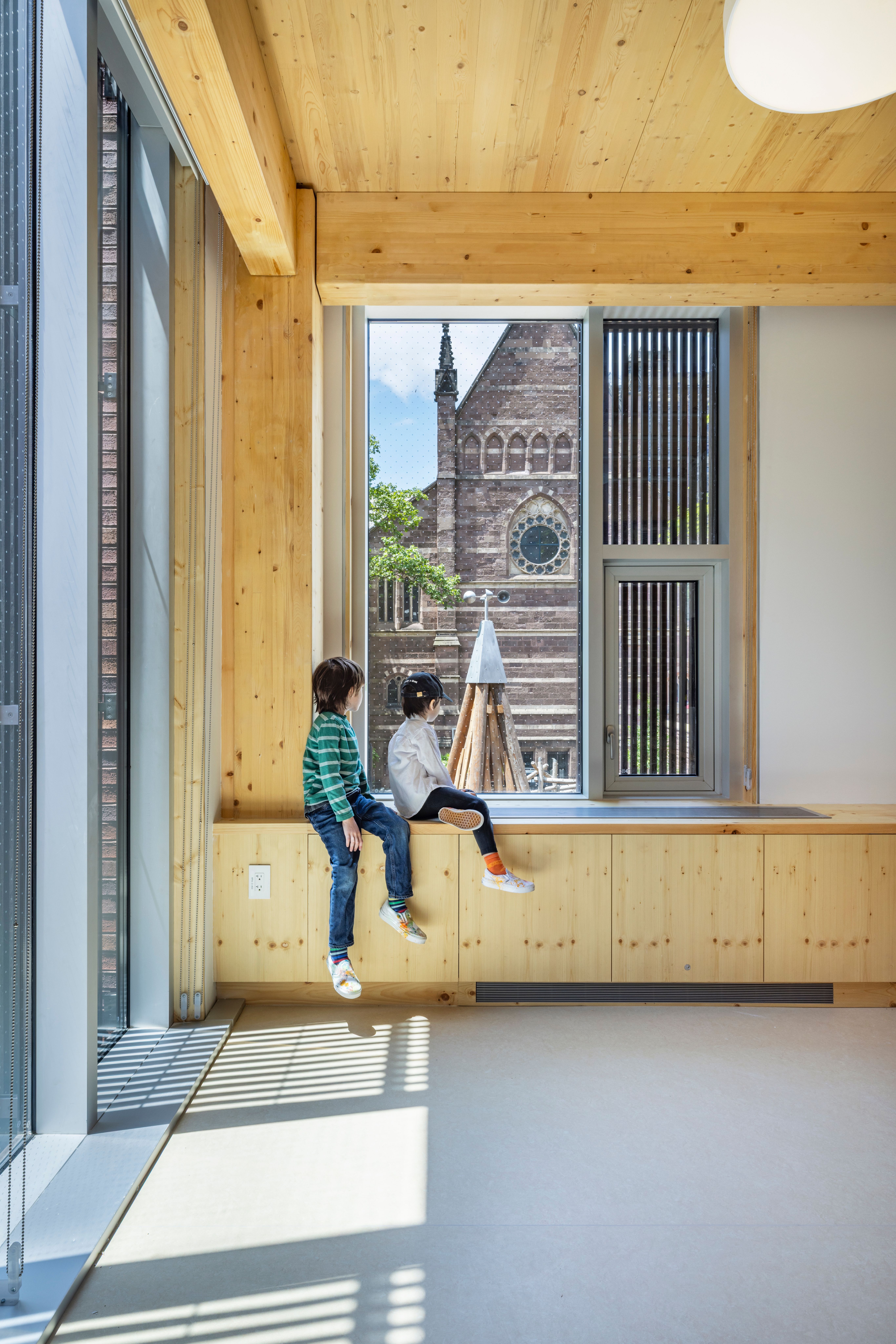
A classroom breakout space with exposed mass timber, wood millwork and deep windowsills that offer warm textures, natural light, and views of the outdoors.
Photo: Albert Vecerka/Esto
The Garden House Expansion is the first major capital project to move forward after the completion of WXY’s Facilities Masterplan for Packer in 2022. The shell of the existing 8,200-square-foot landmark brownstone was fully preserved while a 17,250-square-foot mass-timber expansion was added to serve 1st through 4th grades. The new expansion links four floors of education spaces, with each grade having a dedicated sequence of classrooms, learning suites, washrooms, and breakout spaces.
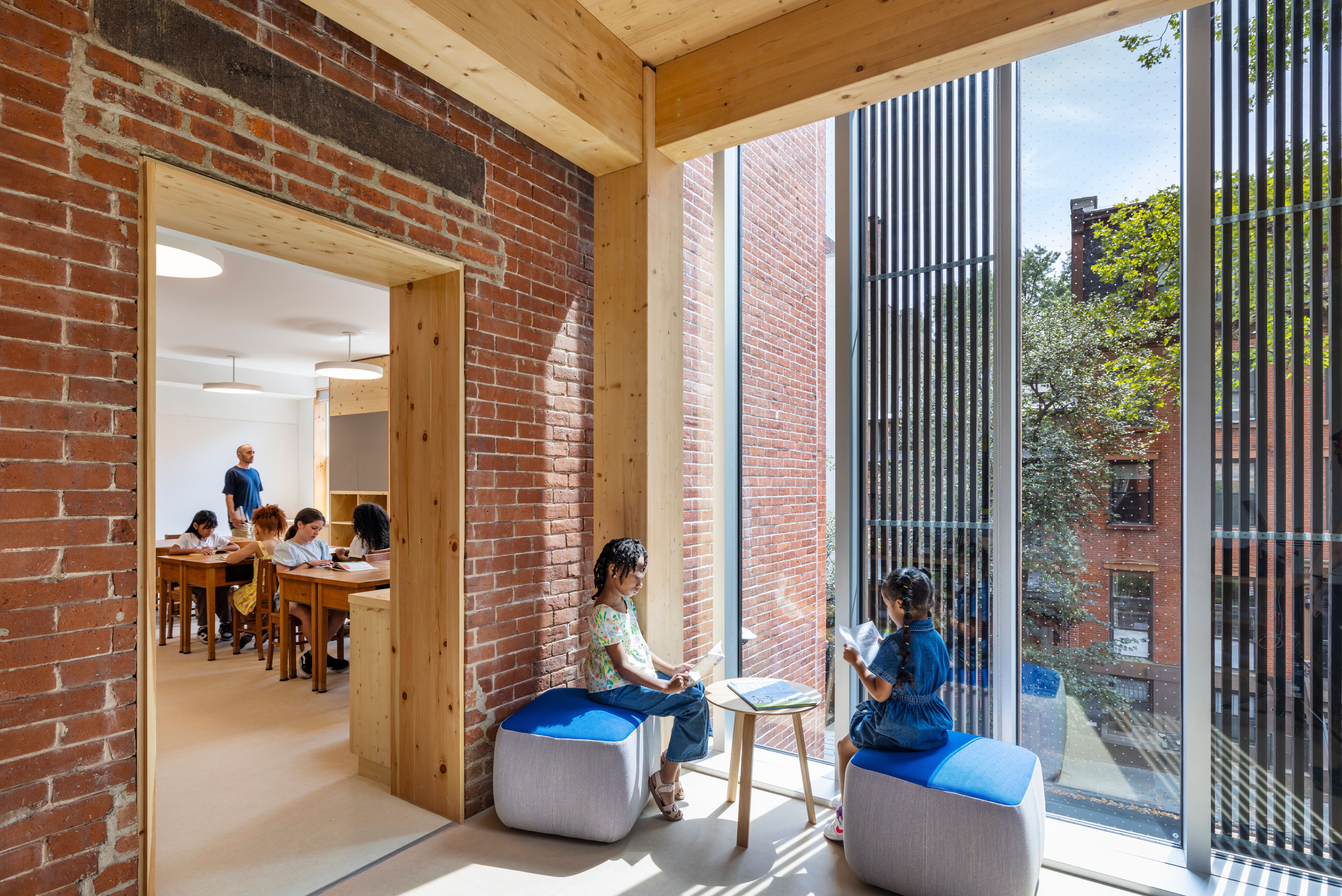
Each grade occupies its own floor, with flexible spaces tailored to different learning styles and programming needs.
Photo: Albert Vecerka/Esto
The building is anchored by a central stair that orients circulation and creates visual connections between floors, shaping a clear space for social interactions.
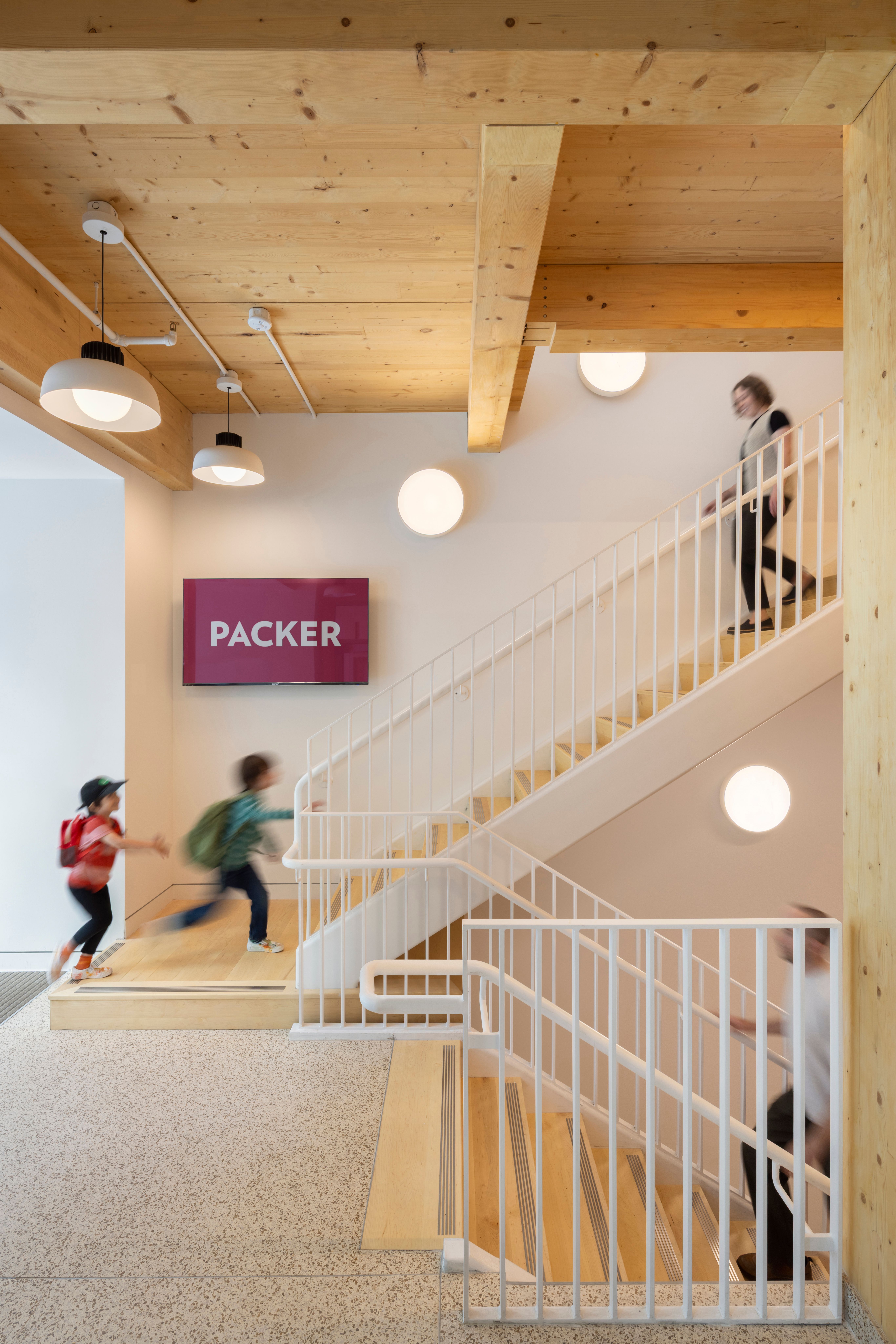
The main stair connects all four floors with light-filled landings and finishes that echo the building’s mass timber structure.
Photo: Albert Vecerka/Esto
Natural materials provide the foundation for the project’s sustainable, human-centered approach, with each choice mindfully made to foster an environment for effective early learning.
Cross-laminated (CLT) and Glulam (glue-laminated) timber made from sustainably sourced wood, including spruce, pine, and fir sourced from northern Ontario, composes the primary structural system. The use of CLT reduces embodied carbon and offers physiological benefits to students, with studies showing that wood environments reduce cortisol levels, stabilize heart rates, and promote focus in children, all aspects particularly important in educational settings. The Garden House is also all-electric, avoiding the use of fossil fuels for day-to-day operations. Its assemblies and service systems include high-performance insulation, daylight-responsive lighting, and high-efficiency HVAC systems. Two extensive green roofs help reduce the building’s stormwater runoff and enhance the energy efficiency of the envelope.
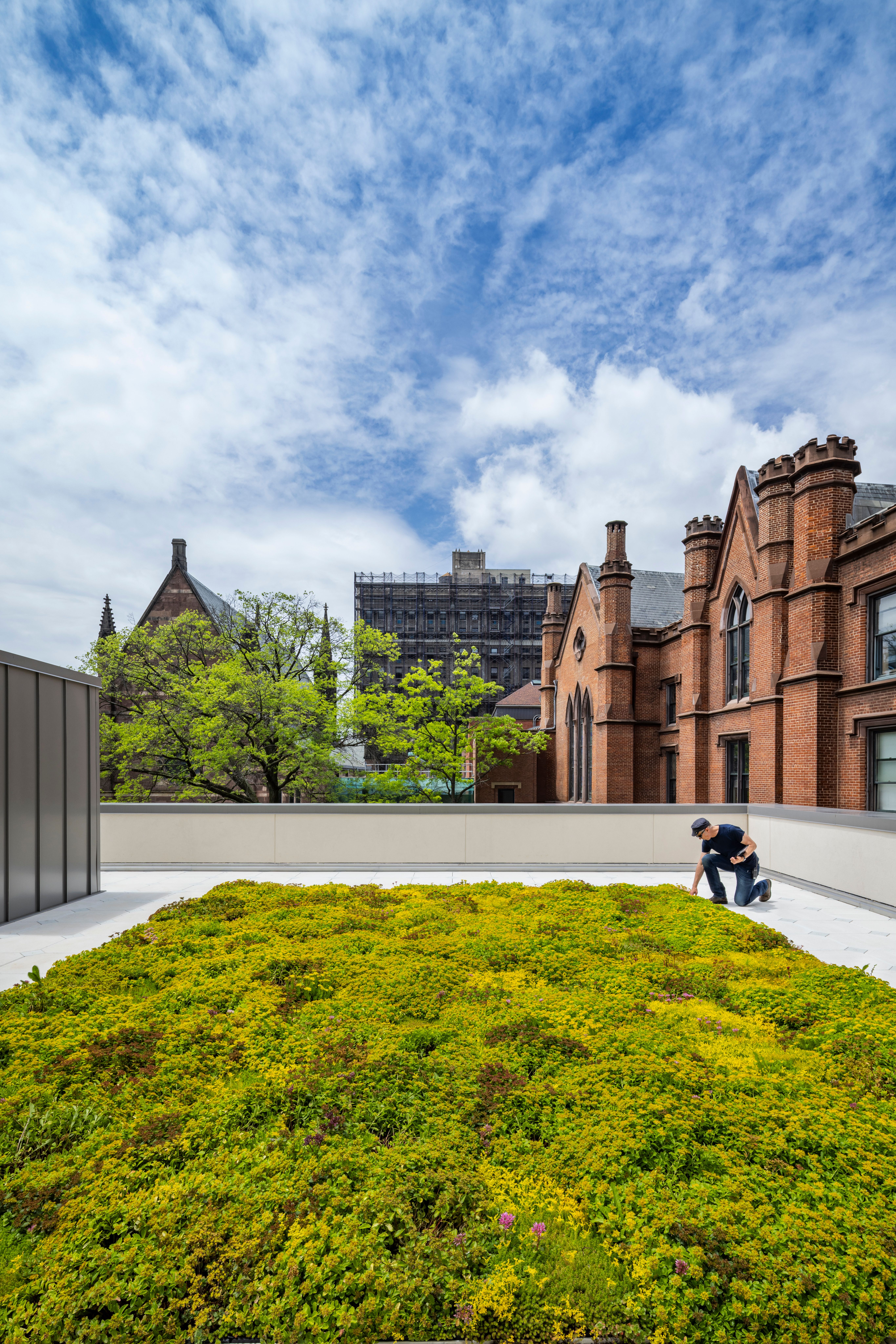
The Garden House’s green roof helps manage stormwater and improve energy performance.
Photo: Albert Vecerka/Esto
The façade uses bricks made from 100% recycled clay content sourced from 30% post-consumer waste and 70% manufacturing waste. The bricks provide a spectrum of colors that stay in dialogue with the diverse masonry palette across the campus’s existing historical buildings. The exterior also boasts a large array of bird frit glazing, providing a deluge of natural daylight and directing sight lines from the classrooms to the newly designed, native landscape of the Garden.
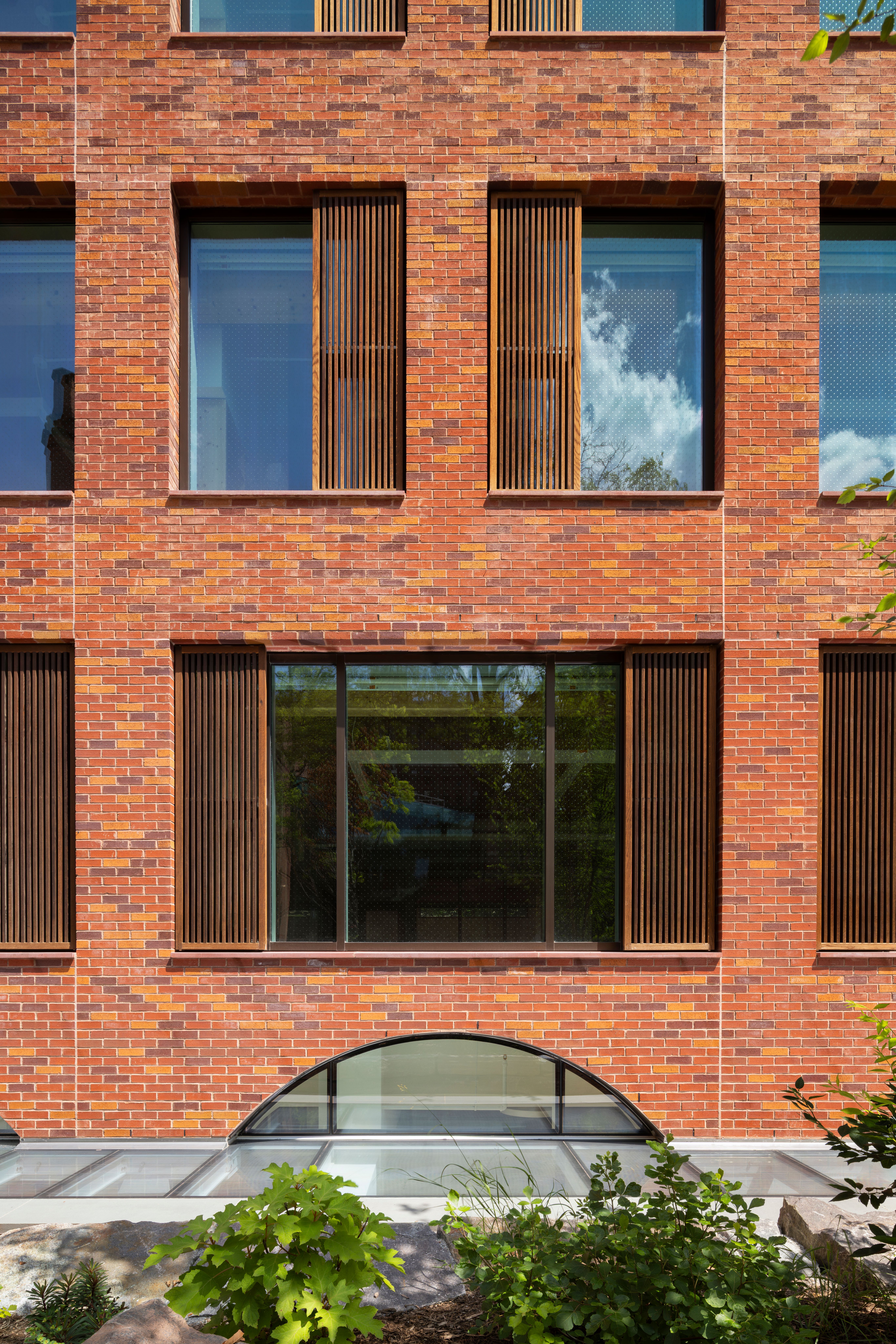
The brick façade blends features recycled materials with refined detailing, complementing the historic character of the surrounding campus.
Photo: Albert Vecerka/Esto
The renovated Garden, designed with Starr Whitehouse, is a model for a sustainable landscape that expands the urban forest. By using permeable surfaces for better water management, the landscape fosters biodiversity and resilience through native and climate-adaptive species. Nearly 90 percent of the 40 new trees, 179 shrubs, and more than 1,000 perennials and grasses are regionally native or climate-resilient, complementing three existing mature trees. This focused planting strategy improves air and water quality and reduces maintenance needs.
The Garden House expands the architectural language of Packer’s campus with intention and restraint. Using durable, low-carbon materials and everyday systems applied thoughtfully, the design creates a setting that is attuned to and fosters the needs of early learners. Classrooms feel grounded and warm. Circulation is intuitive, with every space reflecting the belief that young learners deserve environments shaped specifically for them. This is a building that supports how learning happens for students today and tomorrow. It allows Packer to continue evolving, meeting the needs of future generations without sacrificing the historic character that so richly exemplifies the school’s identity and mission.
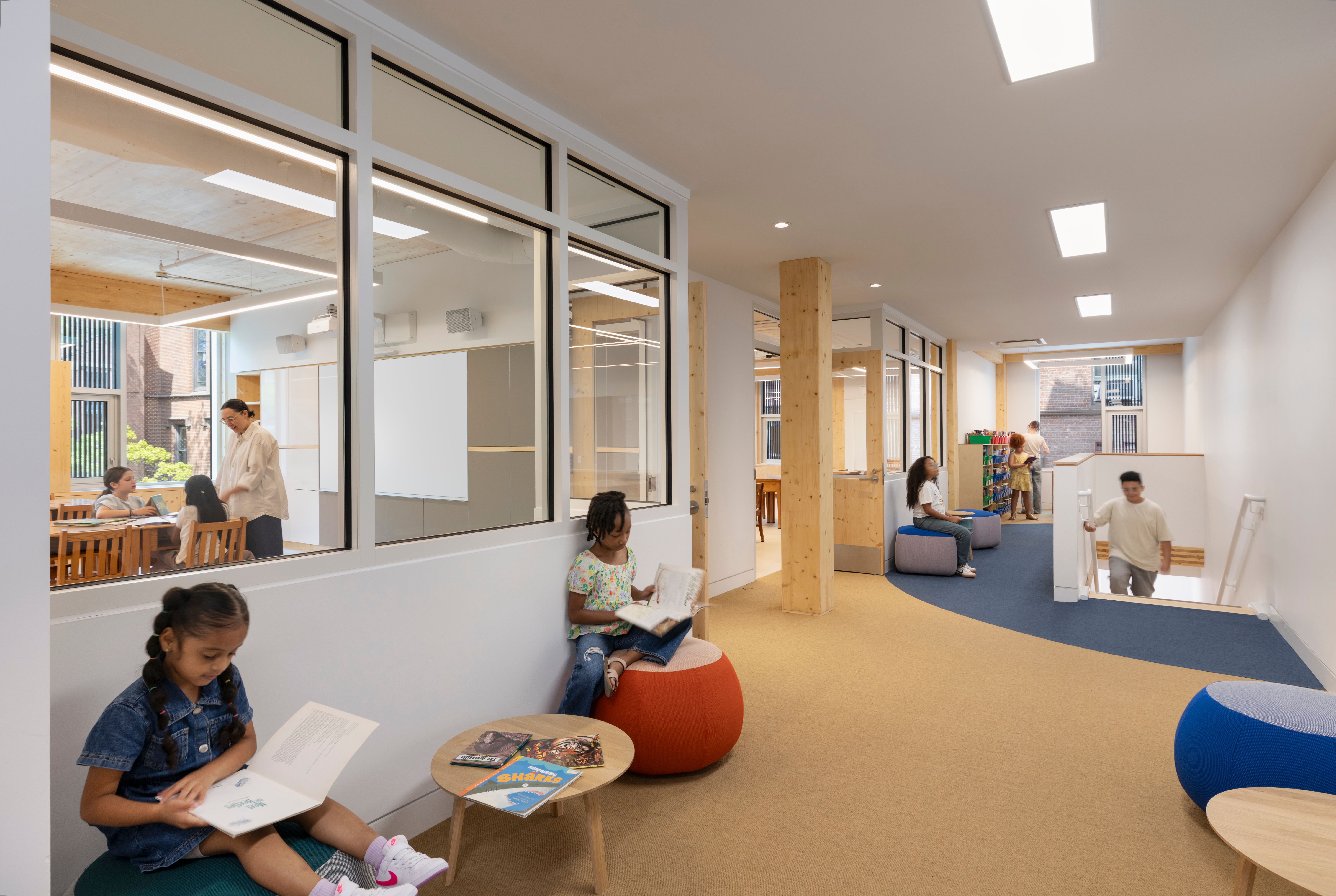
A breakout area with soft seating supports informal learning and gives students space to read, reflect, or reset between classes.
Photo: Albert Vecerka/Esto
Claire Weisz Architects LLP
d/b/a WXY architecture + urban design
212 219 1953
office@wxystudio.com
Careers ↗
New York
25 Park Place, 5th Floor
New York, NY 10007
Toronto
30 St. Patrick Street, 5th Floor
Toronto, ON M5T 3A3 Canada
Subscribe to our newsletter
Site designed by Clinton Van Arnam
Developed by Mario Giampieri